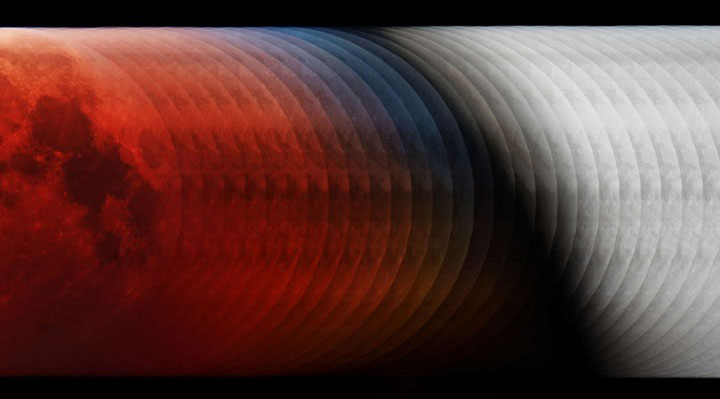The series of photos won the Astronomy Photography 2019 to make viewers ecstatic because of the beauty of the universe
From photographs that capture beautiful auroraes to lunar eclipses and eclipses, all winning photos provide a stunning view of astronomy.

Our Moon (a stunning picture of a true total in Budapest, Hungary on January 21).
The Royal Greenwich Observatory (UK) has just released the winning images of the 2019 Astronomer Photography Contest and it is not surprising that the winning photos have brought a spectacular view of the universe.
This year the competition has received more than 4.6 thousand entries held in 90 countries around the globe. Winners will have the opportunity to receive the award of Astronomy Photographer of the year with the amount of 12.5 thousand USD. Each winner of each category will receive 1.8 thousand USD, the second prize is 630 USD and the other prizes are 315 USD.
According to IFLScience , this year's award went to Hungarian photographer László Francsics for winning the "Our Moon" category (top photo). He combined 32 exposures to get a stunning picture of a total solar eclipse in Budapest, Hungary, on January 21.
Some other works are also very impressive such as dust storms covering Mars or images of galaxies, planets like Mars, Saturn, . The winning photos will be displayed in an exhibition. at the National Maritime Museum, next to the Royal Greenwich Observatory, in London from September 13 to September 26.
According to Oana Sandu, judge of the competition from the Southern European Observatory (ESO), said the winning works all have good image quality, color, true images. The competition was sponsored by Insight Investment and BBC Sky at Night Magazine. Here are some works that won each category.
Aurora

Nicolai Brügger (Germany) records the aurora view on Lofoten island seen from the top of Offerøykammen mountain, Norway
Galaxy

Author Rolf Wahl Olsen (Denmark) with image of galaxy NGC 3923
The Sun (Our Sun)

Author Alan Friedman (USA) and A Little Fireworks work recorded close-ups of the Sun.
People and space

Ben Bush (UK) and Ben, Floyd and the Core.The picture includes Bush, his dog Floyd and the planets appearing in the sky such as Mars, Saturn and the core of the Milky Way.
Planets, comets and asteroids

Andy Casely (Australia) and Death of Opportunity describe the dust storm on Mars when viewed from different angles.
Sky view

By Wang Zheng (China) and Across the Sky of History, taken in Ejina, Mongolia when a meteor streaks across the sky.
Stars and Nebula

Author Ignacio Diaz Bobillo (Argentina) and the Statue of Liberty Nebula
Sir Patrick Moore Award for Best Newcomers (overall victory)

Shuchang Dong (China) with Sky and Ground, Stars and Sand (above) and Ross Clark (UK) with The Jewels of Orion (below)
Award taken from the robot telescope

László Francsics (Hungary) and Infrared shows a close-up of Saturn and its circle
Good for young photographers

The winning author is Davy van der Hoeven, 11 years old (Netherlands) with his work Stellar Flower capturing the nebula NGC 2244 found in the constellation Unicorn of the Milky Way.
- Enthrallingly admire the most beautiful scientific photos of 2019
- Underwater photography techniques make you squint
- Admire the incredible photos of 2015
- Top 10 astronomical photos of 2018
- Body beauty knows movement in photography
- Back in history, learn about nude photography
- Beauty of the universe in the week
- Admire 10 pictures of ravishing American landscapes
- 10 'first photos' in human photography history
- Nature is intense and peaceful in the Australian photography competition
- The most beautiful astronomical photos in 2017
- See the beauty of the galaxy from the garden
- Science through great images
 The 11 most unique public toilets in the world
The 11 most unique public toilets in the world Explore the ghost town in Namibia
Explore the ghost town in Namibia Rare historical moments are 'colored', giving us a clearer view of the past
Rare historical moments are 'colored', giving us a clearer view of the past The world famous ghost ship
The world famous ghost ship